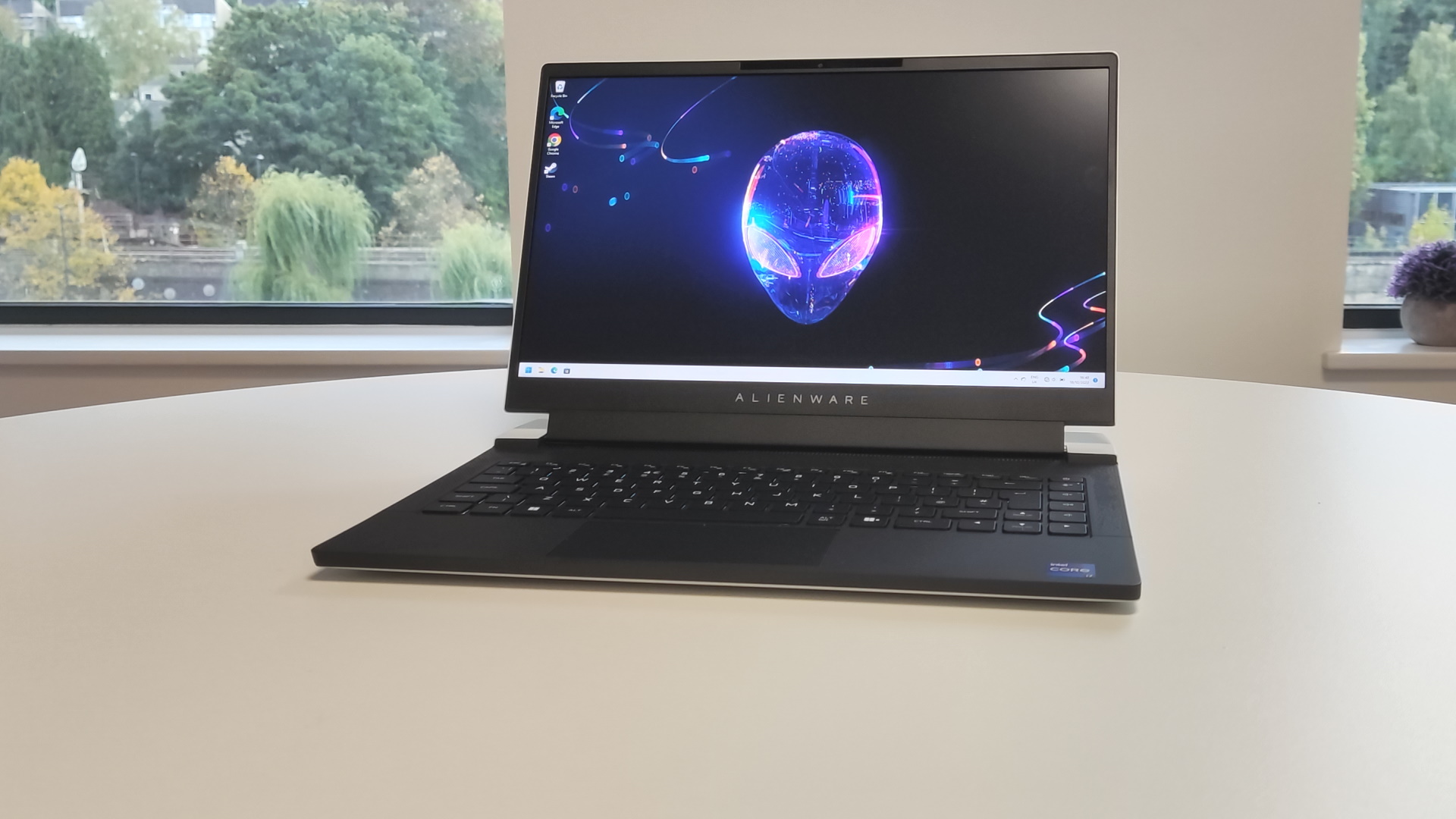Our Verdict
An aesthetically pleasing laptop with solid 1080p gaming performance that falters only in the face of its more aggressively-priced competitors. Still, if you've got the cash, this is a respectable choice of hardware.
For
- Compact but stylish design
- Generally good gaming performance
- Bright 144Hz display
Against
- Unimpressive battery life
- Expensive considering the components
- Rear ports are awkward
PC Gamer's got your back
Dell's Alienware line of gaming laptops has always been a divisive topic; it's difficult to dispute that they've got some powerful components under the hood, but the sci-fi aesthetic isn't to everyone's taste and you're certainly resigning yourself to paying a steep premium if you buy one. I like to call this the 'Alienware Tax'—and with Dell's new Alienware x14, that's actually a tax I'd be happy to pay. The larger, heavier 17-inch models are a bit harder to love, but this compact powerhouse immediately feels like a laptop for the discerning gamer.
Let's take a quick moment to look at what we're working with here. The Alienware x14 can be configured on Dell's websites with a few different specifications, with the cheapest model (which sports a 12th-gen Intel Core i5 processor and an RTX 3050) costing $1,499 (£1,549). The model I'm looking at for review has an Intel Core i7 12700H and an RTX 3060, joined by 16GB of RAM and a 1TB SSD. This model costs $1,949 (£1,929).
You can pay extra to upgrade the memory and the drive (up to 32GB and 4TB respectively) but otherwise, this is the peak of the x14's configurations. That's totally fine, to be clear: squeezing an RTX 3070 or an i9 CPU into this little laptop would probably lead to significant compromises when it came to the chassis or thermal performance, and nobody wants that.
Attach those components to a bright and colourful 1080p display with a 144Hz refresh rate, and you've got a competent FHD gaming system. The Alienware x14 averaged over 60 fps in the majority of games, only dipping down into the 50-60 fps range in the more intensive game benchmarks like Metro: Exodus and Cyberpunk 2077. It won't be able to run Ultra settings cleanly in every single game, but it's the reliable 1080p performance that I've come to expect from the RTX 3060.
The laptop generally performs well across the board, with respectable scores in most synthetic benchmarks thanks to its Core i7 12700H processor and speedy DDR5 memory. It's undeniably a solid machine, but the price tag still doesn't quite add up—considering you can get an RTX 3060-equipped Asus TUF Dash F15 for $800 less, and even the RTX 3070-powered Dash we reviewed is cheaper than this. The Alienware x14 is sitting right at the premium end of FHD gaming laptops.
Processor: Intel Core i7 12700H
Graphics: Nvidia GeForce RTX 3060 6GB
Memory: 16GB LPDDR5-5200
Display: 14-inch non-touch, 144Hz, 3ms
Resolution: 1920 x 1080
Storage: 1TB M.2 NVMe SSD
Battery: 80Wh
Connectivity: 1x USB Type-A 3.2 Gen 1, 2x USB Type-C with Thunderbolt 4, 1x HDMI 2.1, 1x microSD card reader, 1x 3.5mm Combo Jack, built in mic
Dimensions: 15 x 322 x 263mm
Weight: 1.84kg (4.06lbs)
Price: $1,949 | £1,929
So, what is that hefty asking price getting you? Well, for starters this is an impressively compact gaming laptop, weighing in at just 4lbs (1.8kg) and just over half an inch thick with the lid closed. The inset hinge that has become synonymous with Alienware laptops is present, enlarging the overall footprint at the rear by about an inch. The chassis is mostly plastic, but it feels durable and doesn't pick up fingerprints easily.
The physical design is clean and effective; the interior is all-black, with a long perforated grille for the fans and speakers that extends down either side of the keyboard. The screen bezel is quite thin, with a bar across the top that contains the webcam, microphone array, and IR camera for facial recognition logins. Close the lid, and the exterior of the chassis is almost entirely white, printed faintly with a number 14 and adorned with Dell's little alien-face logo.
That logo lights up with RGB LEDs, but there's no sign of the chunky rear lightbar found on larger Alienware laptops here. The keyboard is also limited to single-zone solid-color RGB, so don't expect any flashy lighting effects. It's not a huge loss, but does feel a little harsh given the high price.
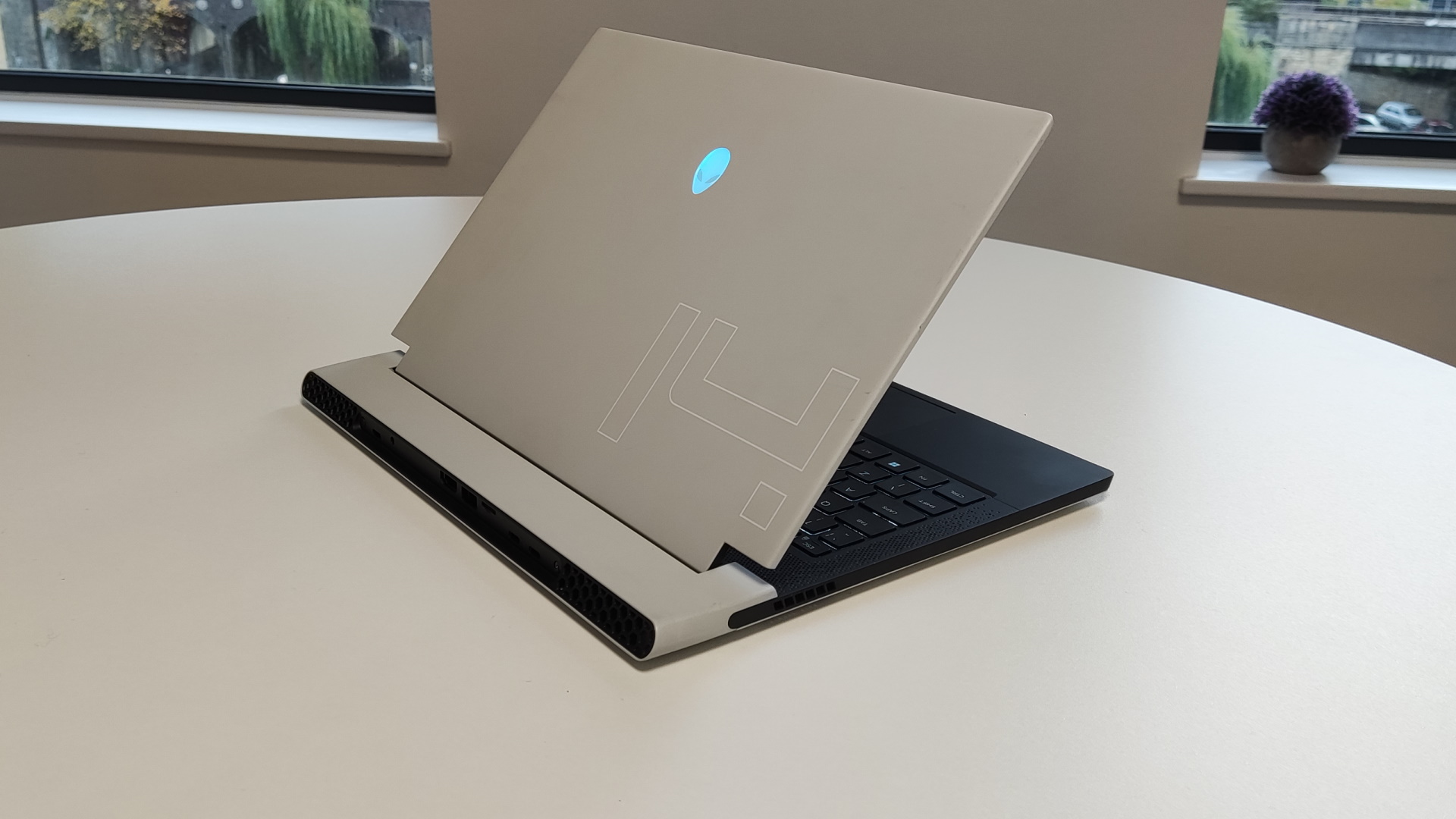
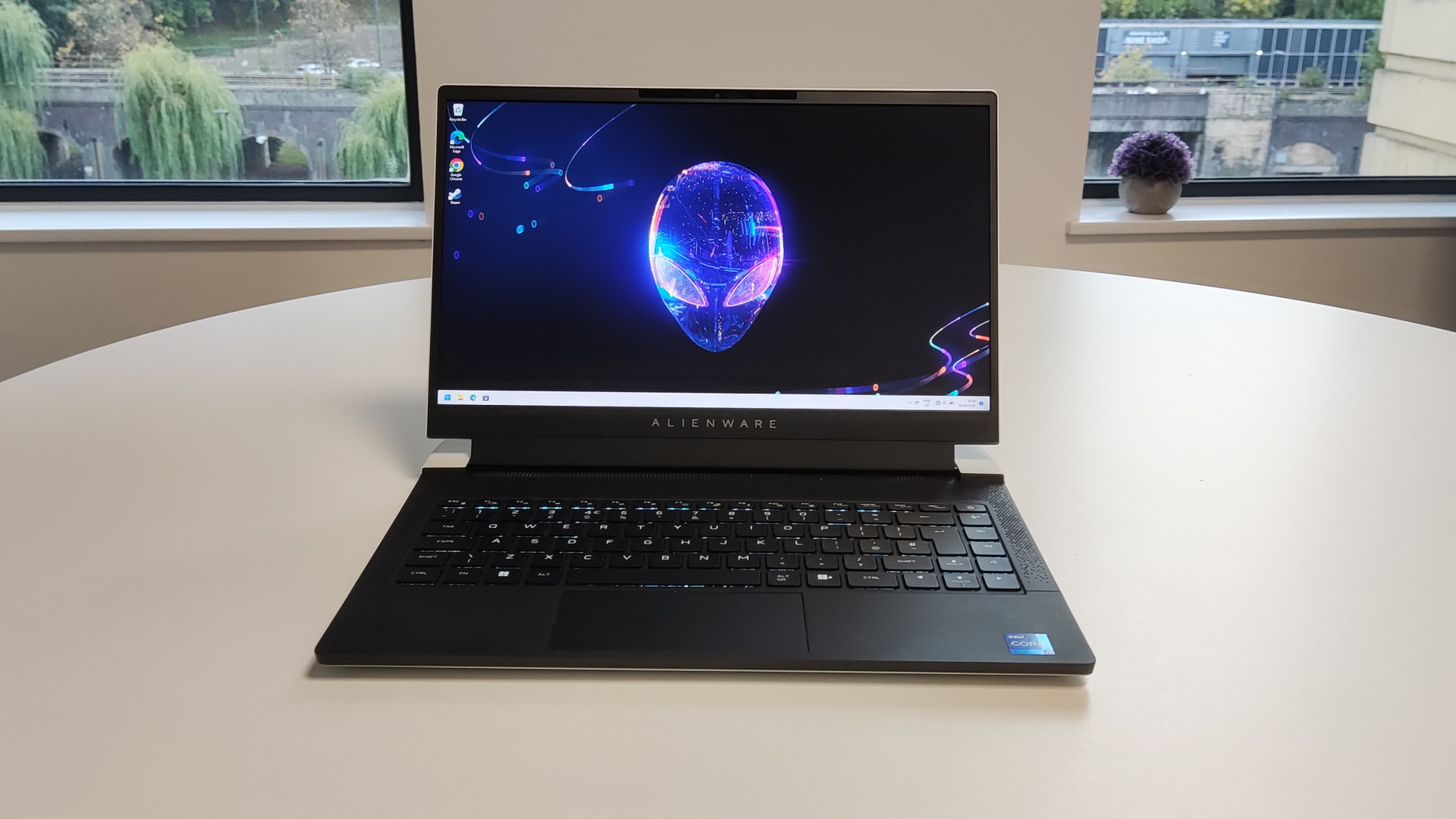
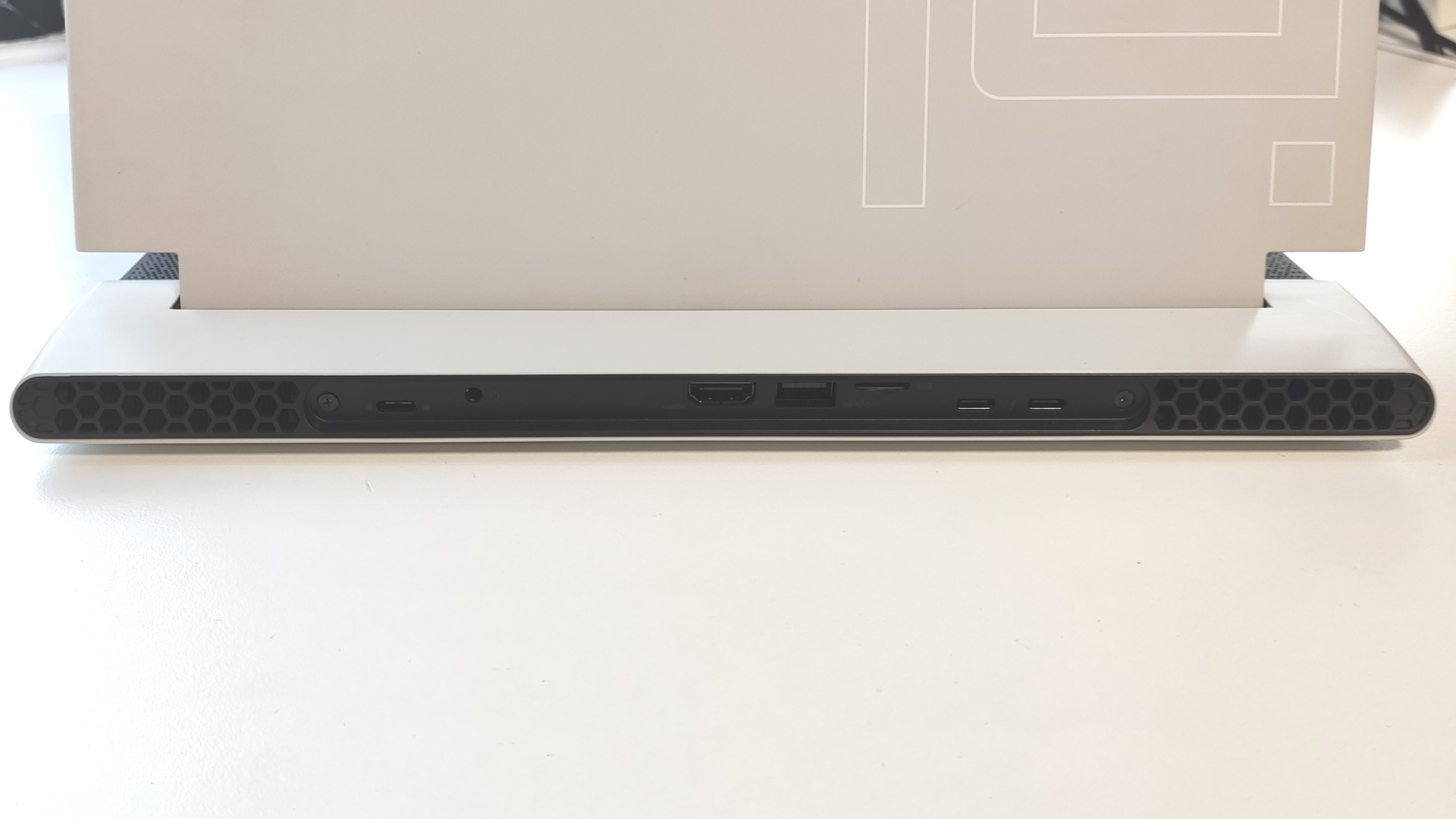
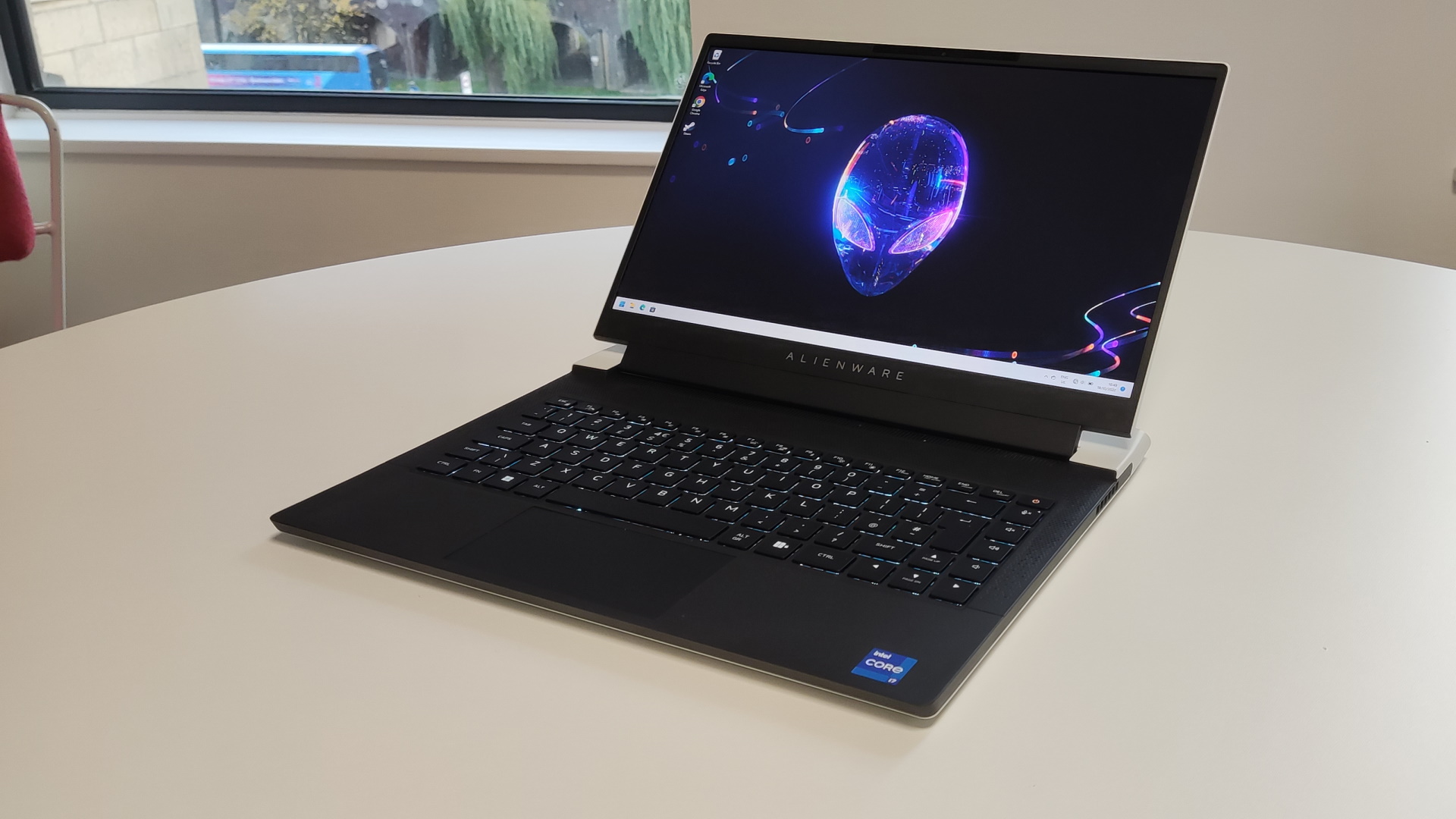
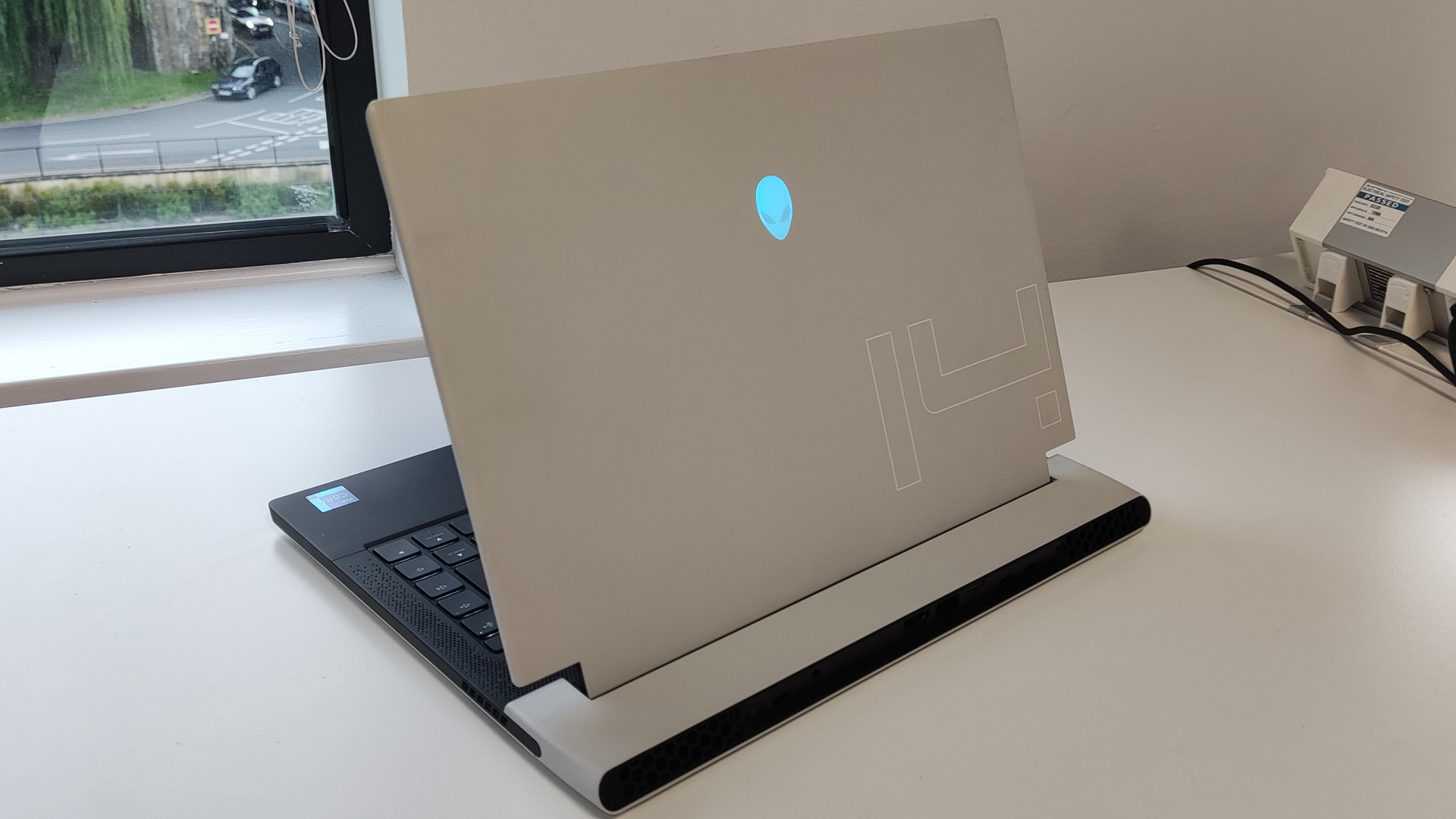
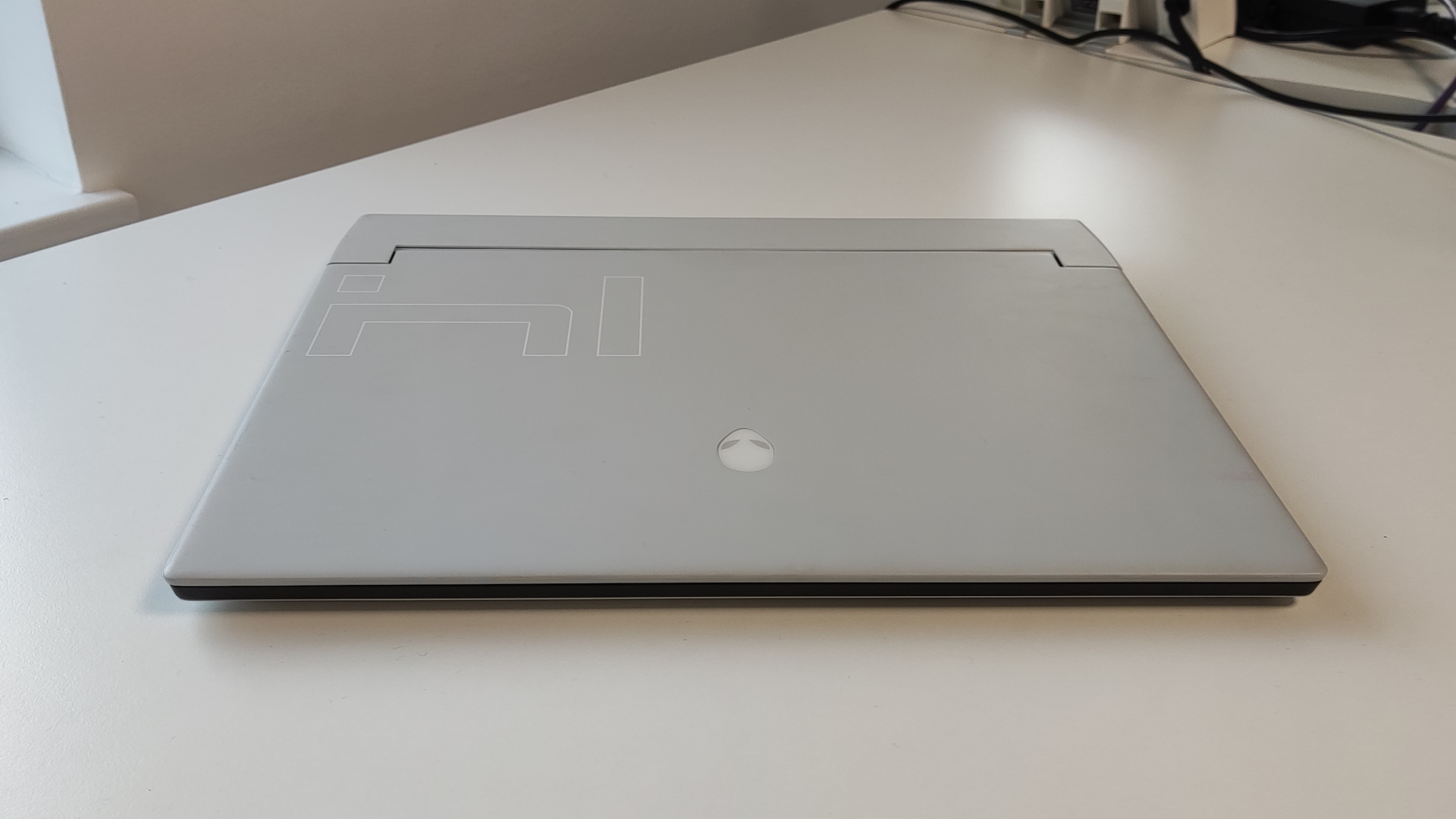
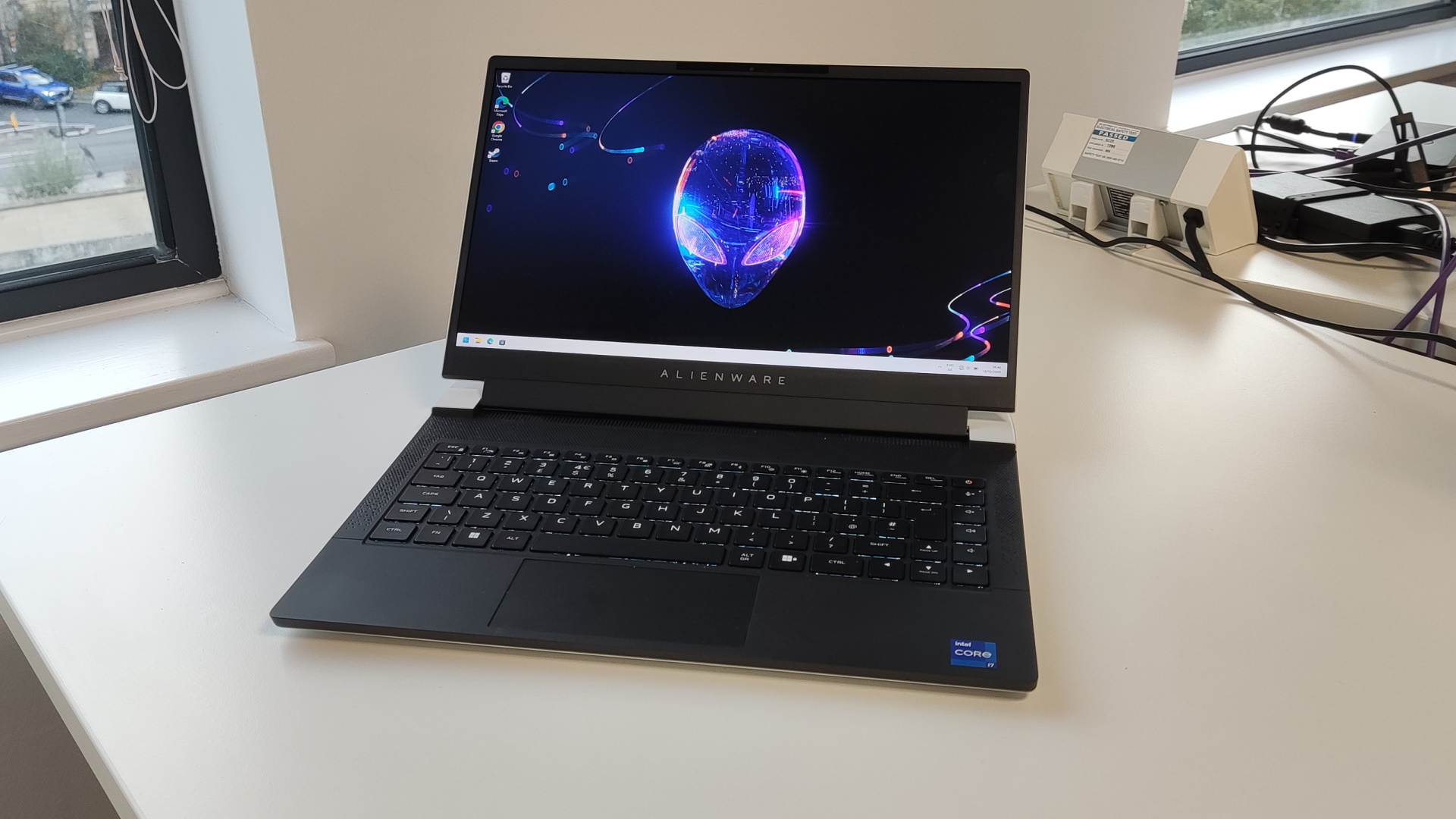
Fortunately, that keyboard is actually good to use. It's nothing mind-blowing—chiclet-style keys with butterfly switches beneath—but the individual key sizing is good, which makes it comfortable to use for both typing and gaming. Running down the right-hand side is a set of dedicated volume and mute keys, with their own lights to indicate whether your mic or speakers are muted.
The trackpad is less impressive. I don't say that because it's unpleasant to use; the click is satisfying, and there's none of the sponginess found in cheaper gaming laptops. It's simply a little on the small side, especially compared to the large trackpad of the Razer Blade 14—which is arguably the Alienware x14's immediate competitor in the premium compact gaming laptop space, and carries its own 'Razer Tax'.
The only significant frown I made when examining the x14's chassis came from finding that every single one of this laptop's ports are located on the rear edge. This is something that might not bother some users, but having to reach all the way around the back to plug in a thumb drive or the power cable swiftly became annoying. There is, at least, a good selection of physical ports: a conventional USB Type-A is joined by two Thunderbolt 4 ports, HDMI 2.1, a headset jack, and a microSD card slot. The only thing missing is an Ethernet connection.
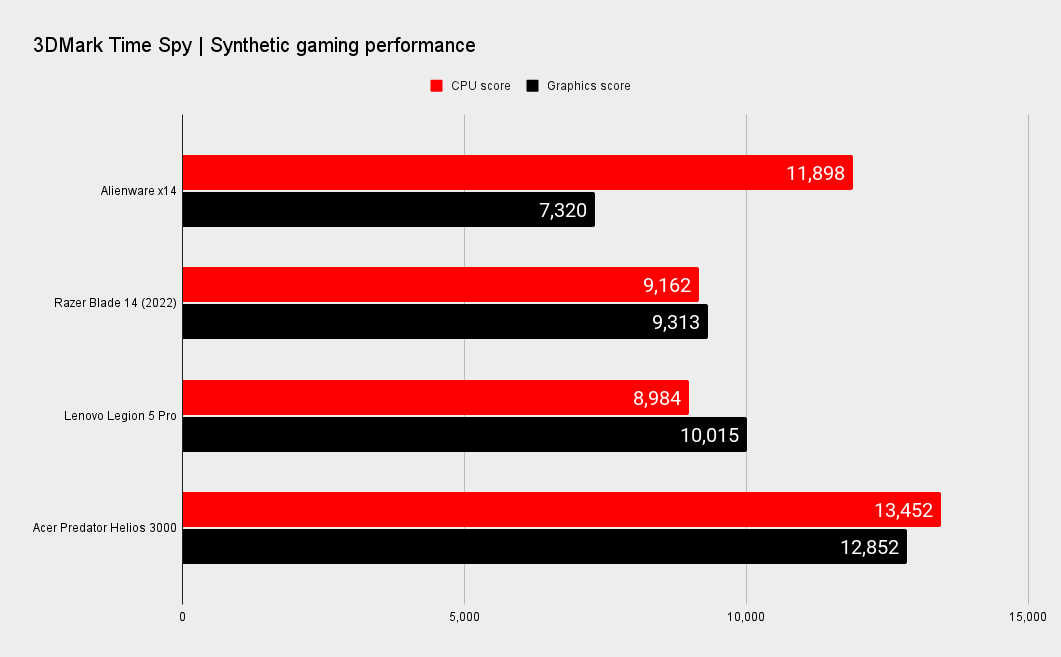
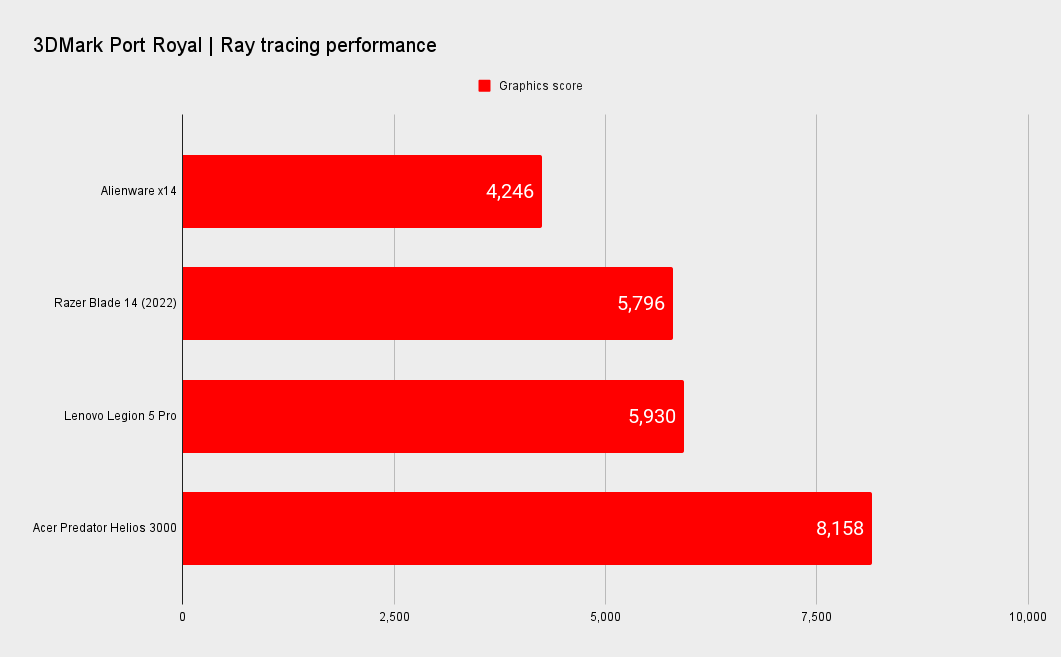
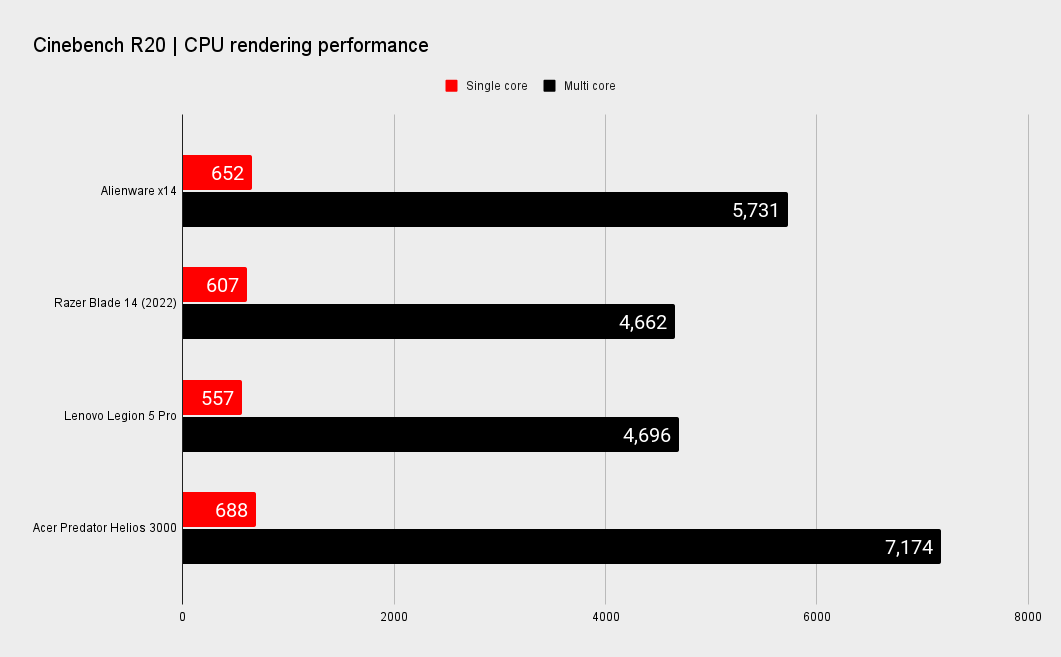
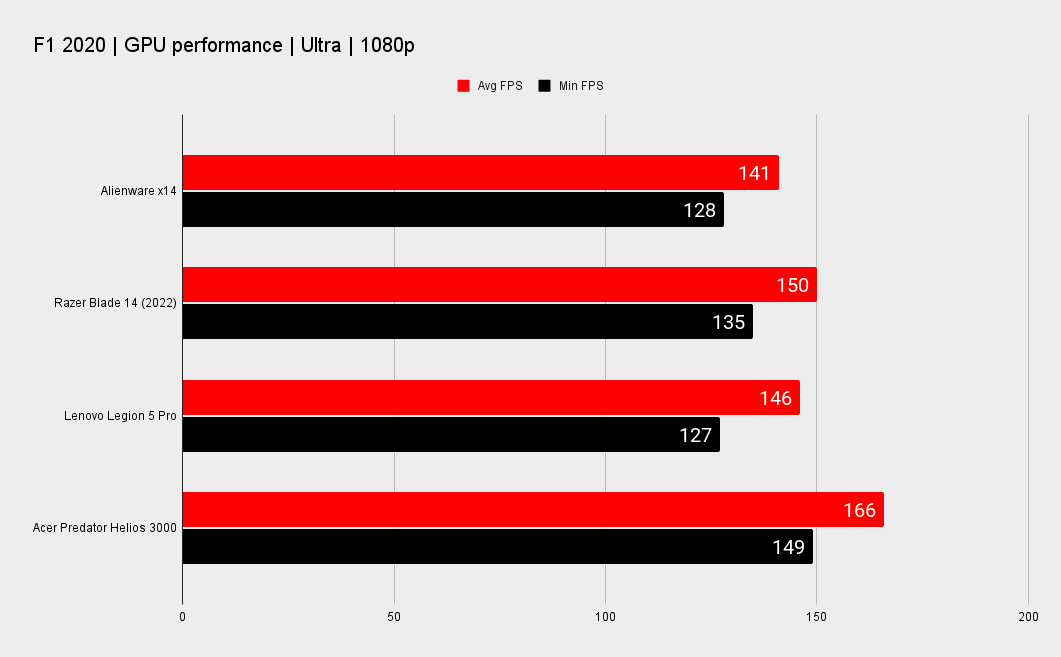
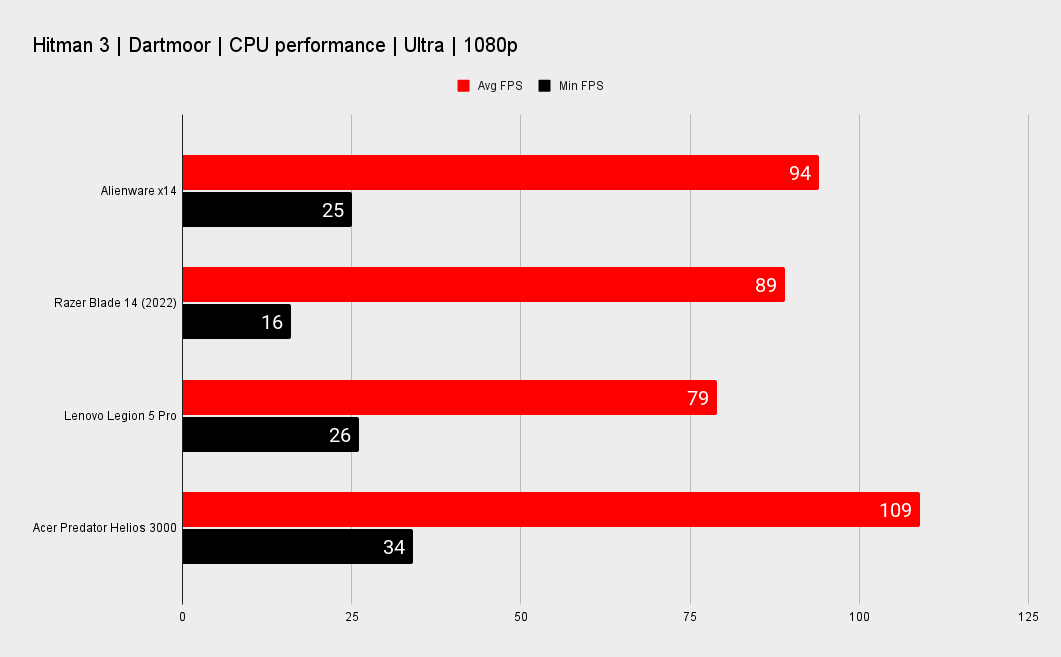
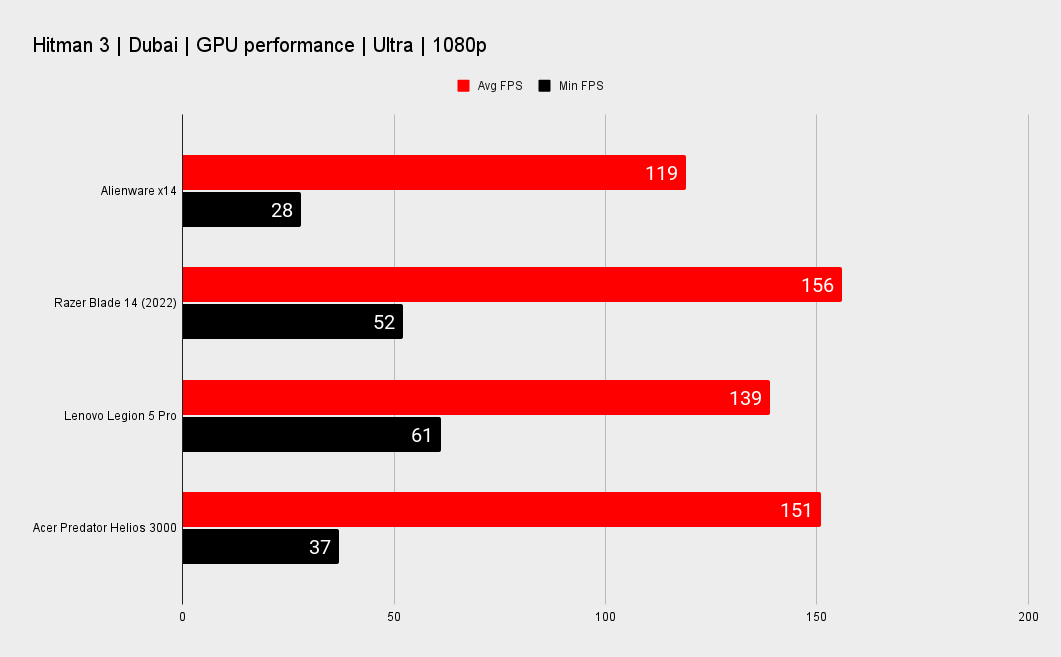

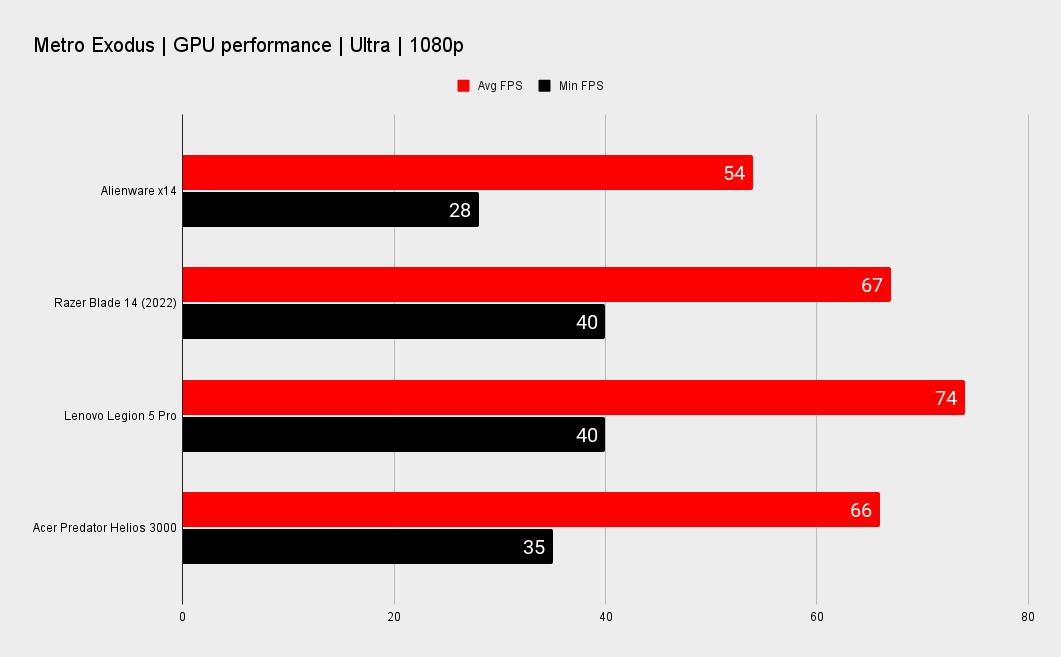
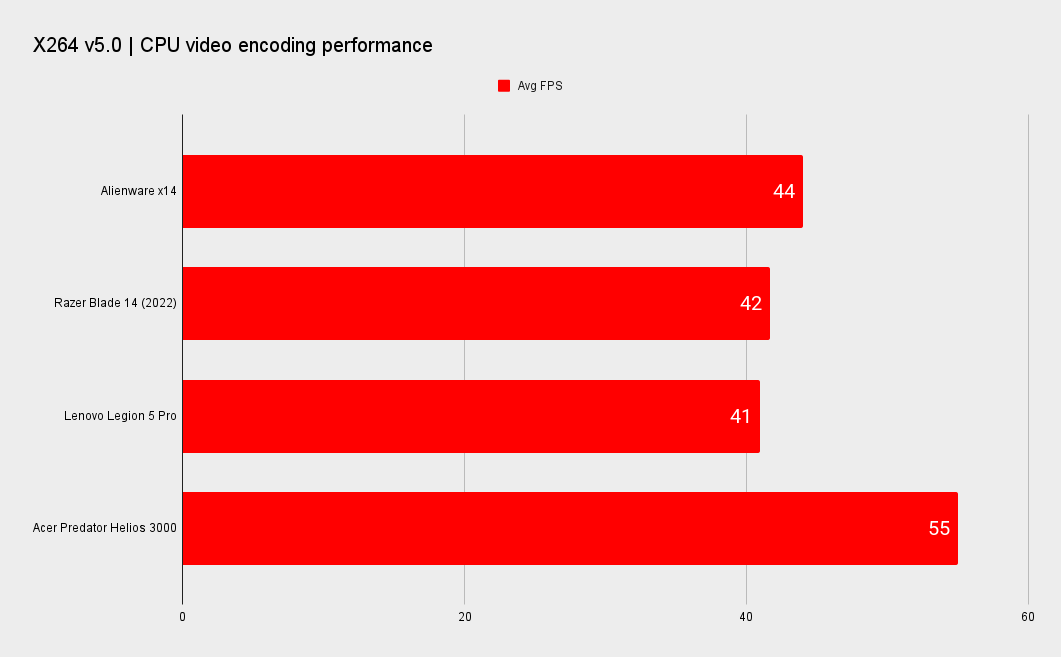
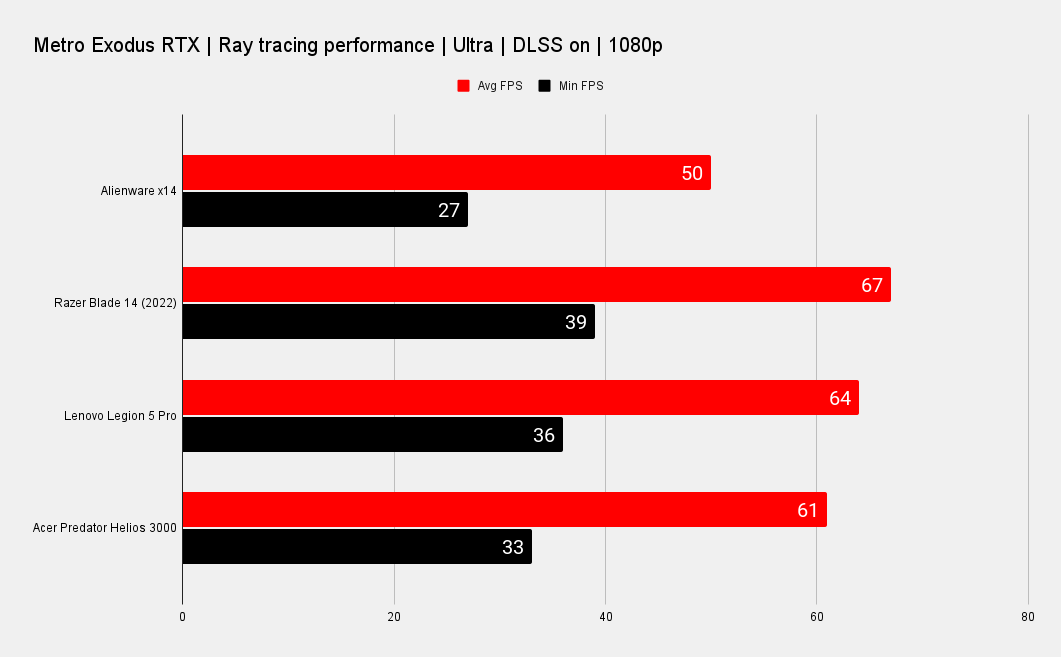
I wish I could say that the Alienware x14's digital side only gave me one concern, but naturally, this laptop came loaded with Dell's almost-bloatware Alienware software suite. Aside from not really doing much in this laptop—you can swap between performance profiles with a button press without needing to ever open the software—it's just not a particularly well-designed piece of software.
The Alienware x14 also uses Nvidia's mode-switching tech to conserve battery life, which in practice is more annoying than it is beneficial. It essentially swaps automatically between using the integrated CPU graphics and the dedicated GPU depending on the task at hand, which would be great if it didn't also freeze for several seconds every single time it did that. I ended up turning it off and sticking to the GPU graphics.
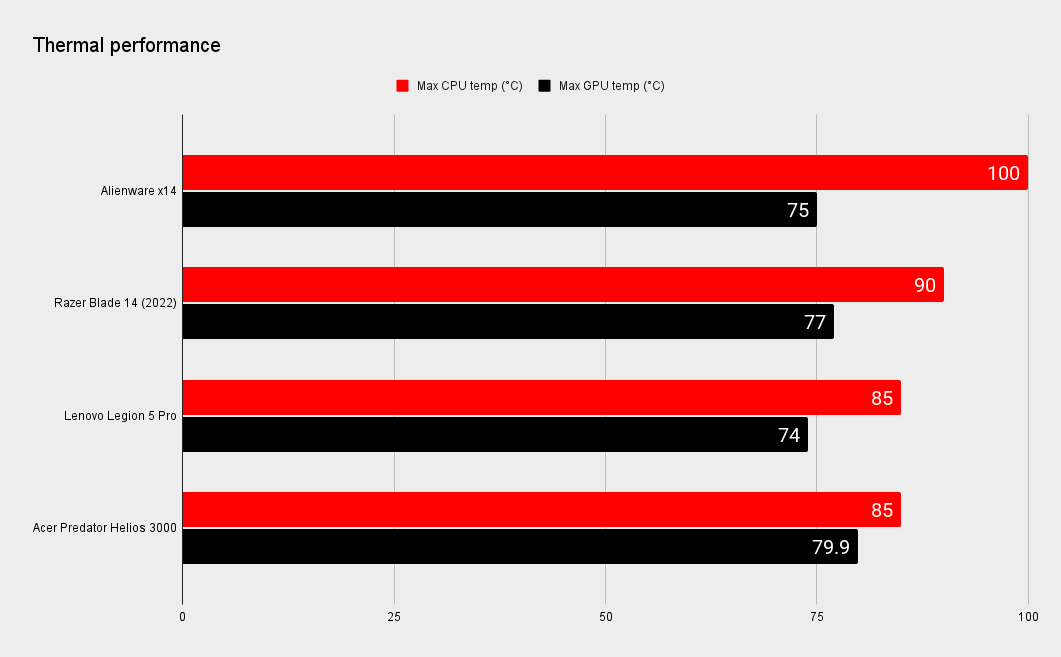
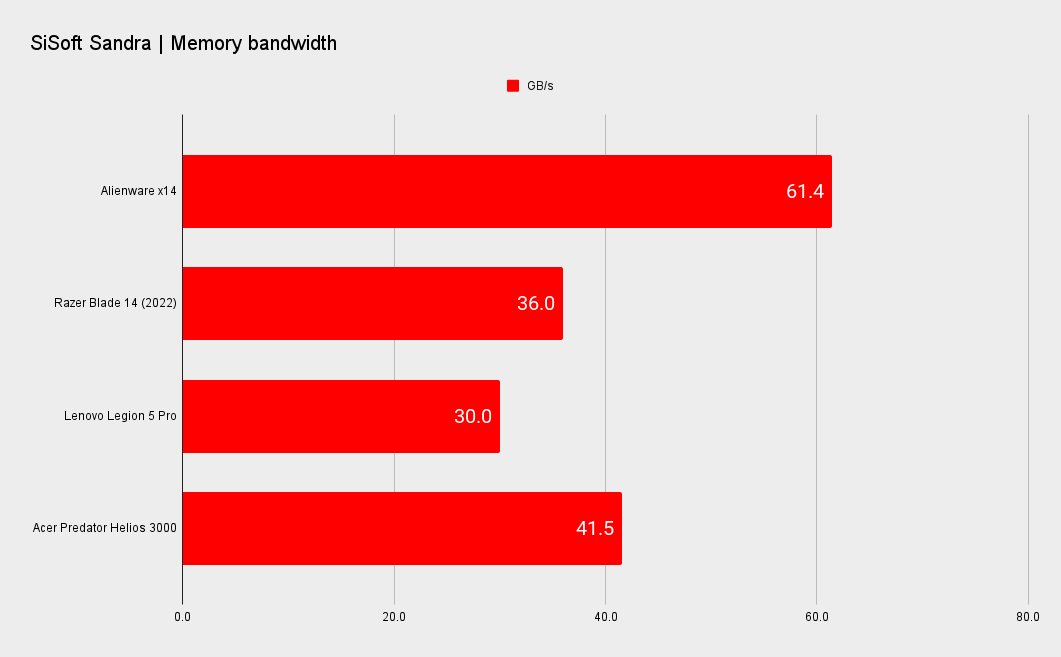
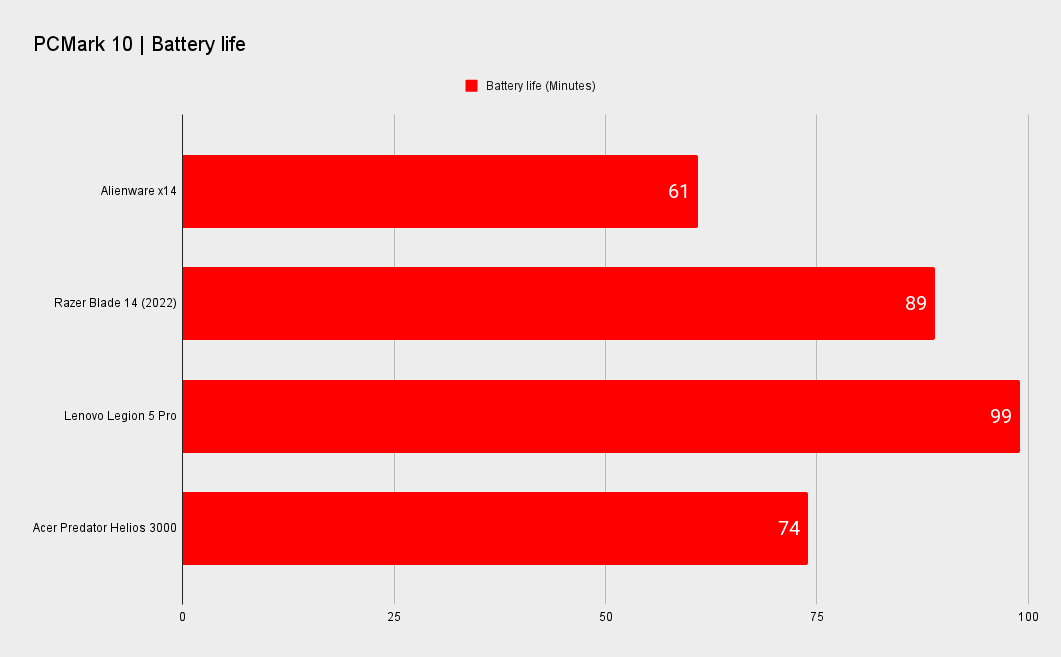
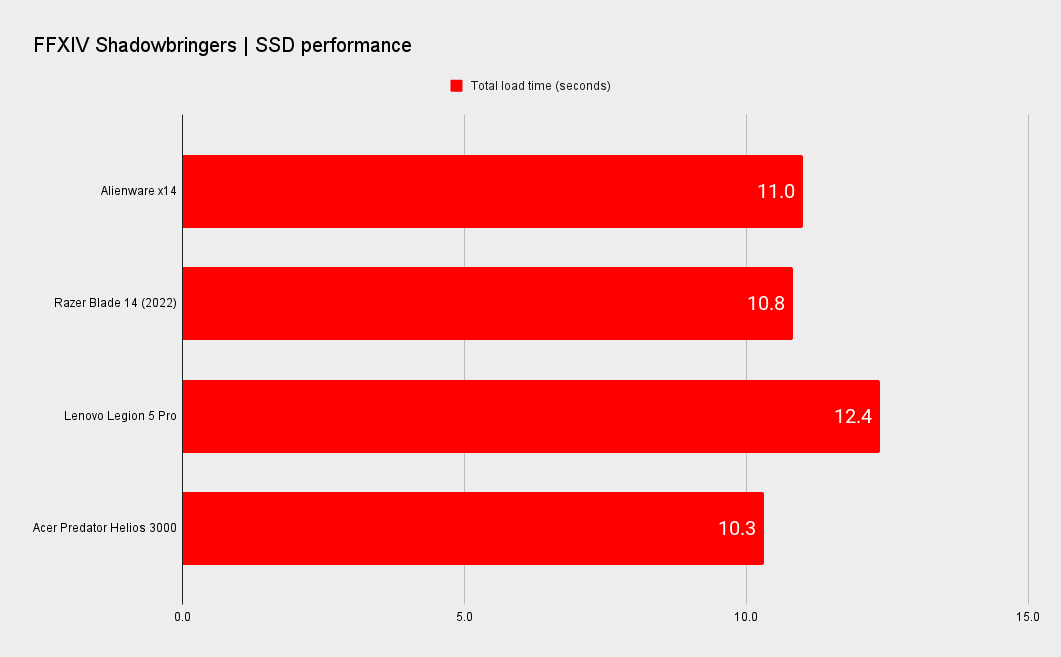
I found that the CPU ran quite hot too—maxing out at 100°C shortly into the benchmarking process, but that didn't appear to cause any noticeable amount of slowdown. The outer casing only felt mildly warm, which is a far cry from the thigh-roastings I've had from other laptops. The fans were a bit noisy while running intensive tasks, however.
Finally, there's the battery life. To put it short: it's not great. I've seen worse, but those were mostly bigger, more powerful machines. Sure, gaming laptops are somewhat universally poor in this area, mostly because running games is a power-intensive activity—anyone who has tried to play Genshin Impact on a phone will testify to this. But still, the Alienware x14's battery life fell just short of 'dismal' in our tests.
The simple truth of the Alienware x14's existence is that it isn't a gaming laptop for everyone. You could get similar performance from a much cheaper laptop, but the target audience here is people who don't want a budget device. The x14 looks and feels like a premium product, with performance that is good enough to justify buying it in the first place.
An aesthetically pleasing laptop with solid 1080p gaming performance that falters only in the face of its more aggressively-priced competitors. Still, if you've got the cash, this is a respectable choice of hardware.
